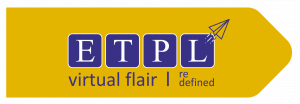In the fast-paced world of educational institutions, managing fees efficiently and accurately is crucial. As schools and colleges grow, so does the complexity of their fee structures. Ensuring timely payments, maintaining accurate records, and providing transparent financial information to students and parents can be challenging. This is where a robust Fee Management System comes into play. It not only simplifies the entire fee collection process but also ensures that all transactions are recorded accurately and efficiently, thus helping educational institutions focus on their primary goal: delivering quality education.
Table of Content
- Challenges in Traditional Fee Management
- What is a Fee Management System?
- Key Features of an Effective Fee Management System
- Benefits of Implementing a Fee Management System
- How to Choose the Right Student Fee Management System
Challenges in Traditional Fee Management
- Manual Errors: Handling fee transactions manually can lead to significant errors, including incorrect entries, misplaced receipts, and miscalculations.
- Time-Consuming Processes: Manual fee management involves tedious tasks such as issuing receipts, maintaining physical records, and reconciling accounts, which consume a lot of time.
- Lack of Transparency: Without a proper system, it becomes difficult to provide transparent fee-related information to parents and students, leading to misunderstandings and disputes.
- Inefficiency in Tracking Payments: Monitoring and tracking fee payments manually can be inefficient and prone to delays, affecting the institution’s cash flow.
- Inadequate Reporting and Analytics: Traditional methods lack the capability to generate detailed reports and analytics, which are essential for making informed financial decisions.
- Security Concerns: Handling cash and maintaining physical records pose significant security risks, including theft and data breaches.
What is a Fee Management System?
A fee management system is a software solution designed to streamline and automate the fee collection process in educational institutions. It integrates various functions such as fee collection, payment tracking, receipt generation, and financial reporting into a single platform. By digitizing these processes, a fee management system eliminates the inefficiencies and inaccuracies associated with manual fee management. It also enhances transparency and security, ensuring that all financial transactions are conducted smoothly and securely.
Know about the School Management System for educational institutes.
Key Features of an Effective Fee Management System
- Automated Fee Collection: Enables the automatic generation and distribution of fee invoices, reducing manual intervention and errors.
- Online Payment Gateway: Allows students and parents to make payments online using various methods such as credit/debit cards, net banking, and digital wallets.
- Real-Time Tracking: Provides real-time tracking of payments and outstanding dues, ensuring accurate and up-to-date financial records.
- Customizable Fee Structures: Supports the creation of customizable fee structures based on different courses, grades, and student categories.
- Detailed Reporting: Generates comprehensive reports and analytics, helping administrators make informed financial decisions.
- Multi-User Access: Allows multiple users, such as administrators, teachers, and accountants, to access and manage the system based on their roles and permissions.
- Secure Data Storage: Ensures secure storage and backup of financial data, protecting it from unauthorized access and data loss.
- Notification and Alerts: Sends automated notifications and alerts to students and parents regarding upcoming due dates and pending payments.
- Integration with Other Systems: Can be integrated with other school management systems such as student information systems (SIS) and learning management systems (LMS) for seamless data flow.
- User-Friendly Interface: Features an intuitive and user-friendly interface that simplifies the fee management process for all users.
Benefits of Implementing a Fee Management System
- Increased Efficiency: Automates repetitive tasks, saving time and reducing administrative workload.
- Enhanced Accuracy: Minimizes manual errors and ensures accurate financial records.
- Improved Transparency: Provides clear and transparent fee-related information to students and parents.
- Better Financial Planning: Offers detailed reports and analytics for better financial planning and decision-making.
- Convenient Payments: Facilitates online payments, making it convenient for students and parents to pay fees from anywhere.
- Reduced Paperwork: Eliminates the need for physical records, reducing paperwork and storage requirements.
- Secure Transactions: Ensures secure handling of financial transactions, protecting against theft and fraud.
- Timely Notifications: Sends timely reminders and notifications, reducing the chances of missed payments.
- Scalability: Can easily scale to accommodate the growing needs of educational institutions.
- Cost-Effective: Reduces administrative costs associated with manual fee management.
How to Choose the Right Student Fee Management System
- Assess Your Needs: Identify the specific needs and requirements of your institution, such as the number of students, types of fees, and payment methods.
- Evaluate Features: Look for a system that offers the key features mentioned above, ensuring it meets your institution’s requirements.
- User-Friendly Interface: Choose a system with an intuitive and user-friendly interface that can be easily used by all stakeholders.
- Integration Capabilities: Ensure the system can integrate with your existing school management systems for seamless data flow.
- Security Measures: Check for robust security measures to protect financial data and transactions.
- Vendor Support: Opt for a vendor that provides reliable customer support and training to ensure smooth implementation and operation.
- Scalability: Select a system that can scale as your institution grows, accommodating more students and complex fee structures.
- Cost Considerations: Consider the total cost of ownership, including initial setup, maintenance, and any additional fees.
Implementing an eGenius fee management system in educational institutions can significantly improve the efficiency and accuracy of fee collection processes. By automating repetitive tasks, reducing manual errors, and providing transparent financial information, a fee management system enables institutions to focus more on their core mission of providing quality education. With careful consideration and selection of the right system, educational institutions can streamline their fee management, enhance financial planning, and offer a better experience for students and parents alike.
Know more about Fee Management Software.














